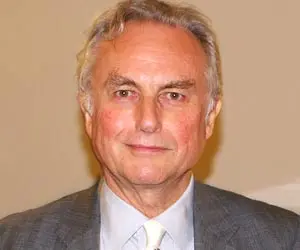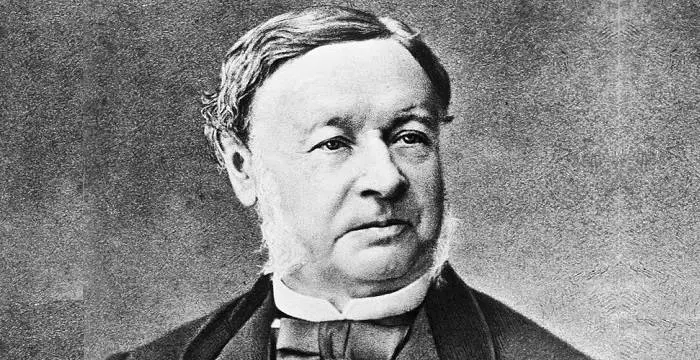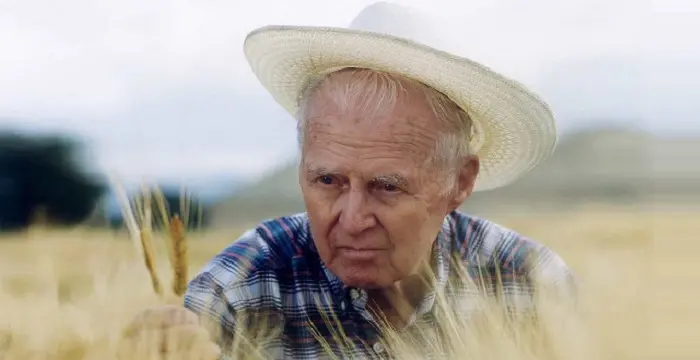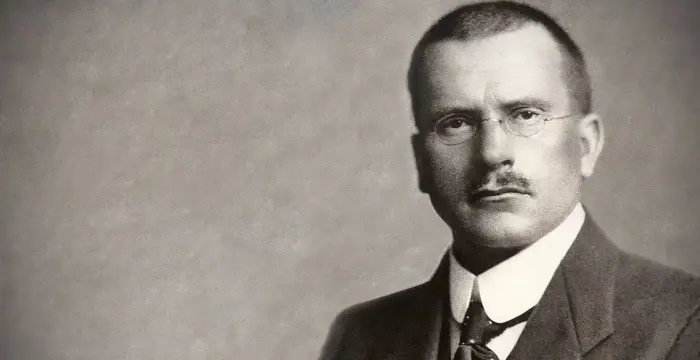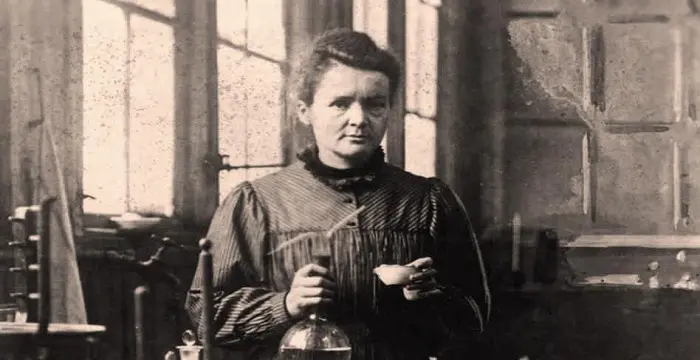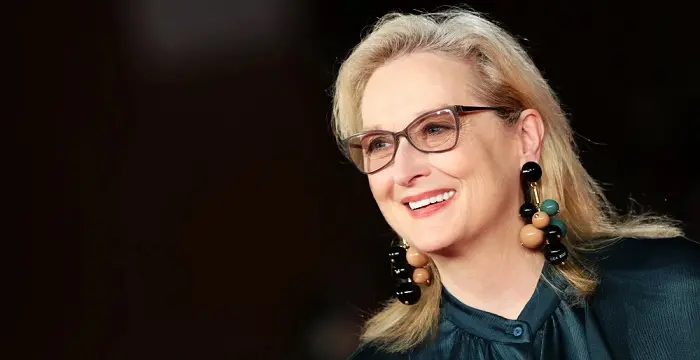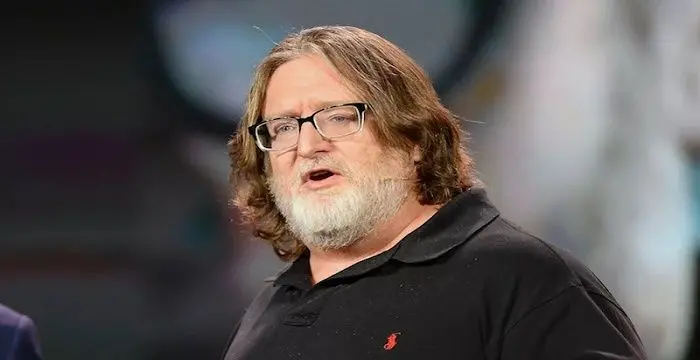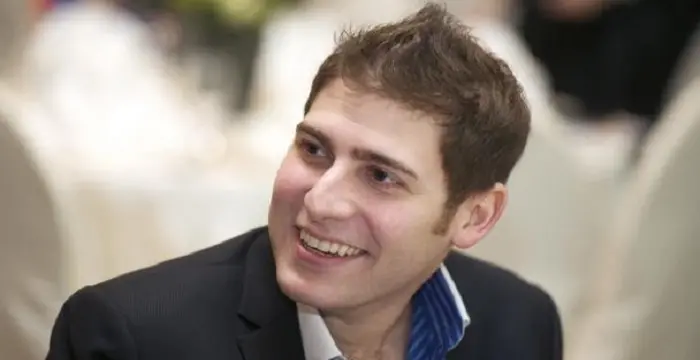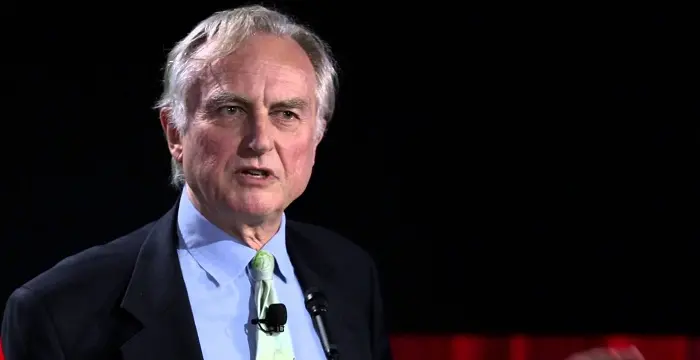
Richard Dawkins - Evolutionary Biologist, Family and Facts
Richard Dawkins's Personal Details
Richard Dawkins is an English ethologist and evolutionary biologist
| Information | Detail |
|---|---|
| Birthday | March 26, 1941 |
| Nationality | British |
| Famous | Atheists, Scientists, Biologists, INTP, Evolutionary Biologist |
| Spouses | Eve Barham, Lalla Ward, Marian Stamp |
| Known as | Clinton Richard Dawkins |
| Childrens | Juliet Emma Dawkins |
| Universities |
|
| Founder / Co-Founder |
|
| Birth Place | Nairobi |
| Height | 178 |
| Gender | Male |
| Father | Clinton John Dawkins |
| Mother | Jean Mary Vyvyan Ladner |
| Net Worth | $135 Million as of Mar 7,2017 |
| Sun Sign | Aries |
| Born in | Nairobi |
| Famous as | Evolutionary Biologist |
Richard Dawkins's photo
Who is Richard Dawkins?
Richard Dawkins is an English ethologist and biologist who has made significant contributions to the field of evolutionary biology. He emphasized on the role of the gene in evolution and developed the new discipline of genetic ethology. His interest in ethology—the scientific and objective study of animal behaviour—stemmed from his childhood experiences as he had grown up in Kenya, observing the wildlife around him. Animal behaviour fascinated him greatly and it developed into a life-long interest which shaped his future career. He was brought up in a religious atmosphere though he later renounced religion and became an atheist when he realized that the theory of evolution provided better answers to life’s complexities as compared to religion. After studying zoology at Oxford he became a professor and also edited a number of journals. An ardent Darwinist, he is best known for his gene-centred reformulation of Charles Darwin's theory of natural selection. He is a prominent critic of religion and believes that religion is both a source of conflict and a justification for belief without evidence. He has authored several books and has also produced numerous television documentaries. Dawkins founded the Richard Dawkins Foundation for Reason and Science (RDFRS), a non-profit organization to finance scientific educational programs and research on the psychology of belief and religion.
// Famous Biologists
Juliane Koepcke
Juliane Koepcke is a German-Peruvian biologist, who was the lone survivor among the 92 passengers and crew of the ill-fated LANSA Flight 508 that crashed in the Peruvian rainforest on 24 December 1971. Know more about her life in this biography.
Theodor Schwann
Theodor Schwann was a German physiologist who discovered the Schwann cells in the peripheral nervous system. This biography of Theodor Schwann provides detailed information about his childhood, life, achievements, works & timeline.
Norman Borlaug
Norman Borlaug was an American biologist known as the “Father of the Green Revolution”. This biography of Norman Borlaug provides detailed information about his childhood, life, achievements, works & timeline.
Childhood & Early Life
He was born on 26 March 1941 in Nairobi, Kenya as the son of Jean Mary Vyvyan and Clinton John Dawkins. His father was an agricultural civil servant in the British Colonial Service in Kenya and thus he spent his early life in the country’s wilderness, observing the different types of animals and their behavior. He has one younger sister.
The family went to England in 1949 when Dawkins was eight. He was raised as a Christian though he stopped believing in religion during his teenage years. An intelligent and curious boy, he realized that the theory of evolution offered much better answers to life’s puzzles than did religion.
He went to Oundle School in Northamptonshire from 1954 to 1959. After that he went to Balliol College, Oxford where he studied zoology and graduated in 1962. While there he studied under the eminent ethologist Nikolaas Tinbergen as a research student and received his D.Phil degree by 1966.
Career
He was appointed as an assistant professor of zoology at the University of California, Berkeley in 1967 and held this position till 1969. While there he became heavily involved in the anti-war demonstrations and activities.
He became a lecturer at the University of Oxford in 1970. A few years later he published his book, ‘The Selfish Gene’ (1976), a book on evolution which builds upon the principal theory of George C. Williams’ first book ‘Adaptation and Natural Selection’.
In the book ‘The Selfish Gene’ he argued that natural selection takes place at the genetic level rather than the species or individual level as was generally assumed. He stated that genes use the bodies of living organisms to further their own survival.
In 1982 he released his book ‘The Extended Phenotype’ in which he describes the biological concept of the same name. He explained that phenotypes should not be limited to biological processes but also extended to include all effects that a gene has on its environment.
In 1990 he assumed the post of a reader in zoology at the University of Oxford. He was appointed Simonyi Professor for the Public Understanding of Science at Oxford in 1995—a position that had been endowed by Charles Simonyi with the specific request that Richard Dawkins be its first holder. |
He also regularly comments in newspapers and weblogs on contemporary political questions and a collection of his selected essays and other writings on varied subjects including pseudoscience, genetic determinism, memetics, terrorism, religion and creationism was published as ‘A Devil's Chaplain’ in 2003.
He founded the Richard Dawkins Foundation for Reason and Science (RDFRS or RDF) in 2006. This is a non-profit science education organization which plans to finance research on religion and belief, finance scientific education programs and materials, and support charitable organizations that are secular in nature.
Awards & Achievements
He won a Royal Society of Literature award and a Los Angeles Times Literary Prize for his book ‘The Blind Watchmaker’ in 1987.
In 1989, he was honored with the Zoological Society of London's Silver Medal and the next year he received the Finlay Innovation Award and the Michael Faraday Award.
The Hamburg-based Alfred Toepfer Foundation awarded him with Shakespeare Prize in recognition of his "concise and accessible presentation of scientific knowledge" in 2005.
In 2006, he won the Lewis Thomas Prize for Writing about Science and in 2007, the Galaxy British Book Awards’ Author of the Year Award.
In 2010, Dawkins was named to the Freedom From Religion Foundation's Honorary Board of distinguished achievers.
Personal Life & Legacy
His first marriage was to fellow ethologist Marian Stamp in 1967. The couple divorced in 1984.
Shortly after his divorce he married Eve Barham and had a daughter with her. This marriage too ended in divorce.
He tied the knot for the third time with Lalla Ward in 1992. Lalla is an actress who he had met through a common friend.
// Famous INTP
Carl Jung
Carl Jung was a Swiss psychiatrist famous for founding the school of analytical psychology. This biography of Carl Jung provides detailed information about his childhood, life, achievements, works & timeline.
Marie Curie
Marie Curie was a Physicist and Chemist, who was world renowned for her work on radioactivity. She also was the winner of two Nobel Prize. Read this biography to get info about her life and profile.
Meryl Streep
Meryl Streep is one of the most talented actors of the modern era. She has played the most real-life characters in the history of cinema. Check this biography to get details about her life, profile & timeline.
Richard Dawkins's awards
| Year | Name | Award |
|---|---|---|
Other | ||
| 1996 | American Humanist Association's Humanist of the Year Award | |
| 2007 | Galaxy British Book Awards's Author of the Year Award | |
| 0 | - Deschner Award | |
| 0 | 1987 - Royal Society of Literature Award | |
| 0 | 1990 - Finlay Innovation Award | |
| 0 | 1990 - Michael Faraday Award | |
Richard Dawkins biography timelines
- // 26th Mar 1941He was born on 26 March 1941 in Nairobi, Kenya as the son of Jean Mary Vyvyan and Clinton John Dawkins. His father was an agricultural civil servant in the British Colonial Service in Kenya and thus he spent his early life in the country’s wilderness, observing the different types of animals and their behavior. He has one younger sister.
- // 1949The family went to England in 1949 when Dawkins was eight. He was raised as a Christian though he stopped believing in religion during his teenage years. An intelligent and curious boy, he realized that the theory of evolution offered much better answers to life’s puzzles than did religion.
- // 1966He went to Oundle School in Northamptonshire from 1954 to 1959. After that he went to Balliol College, Oxford where he studied zoology and graduated in 1962. While there he studied under the eminent ethologist Nikolaas Tinbergen as a research student and received his D.Phil degree by 1966.
- // 1967 To 1969He was appointed as an assistant professor of zoology at the University of California, Berkeley in 1967 and held this position till 1969. While there he became heavily involved in the anti-war demonstrations and activities.
- // 1967 To 1984His first marriage was to fellow ethologist Marian Stamp in 1967. The couple divorced in 1984.
- // 1970He became a lecturer at the University of Oxford in 1970. A few years later he published his book, ‘The Selfish Gene’ (1976), a book on evolution which builds upon the principal theory of George C. Williams’ first book ‘Adaptation and Natural Selection’.
- // 1982In 1982 he released his book ‘The Extended Phenotype’ in which he describes the biological concept of the same name. He explained that phenotypes should not be limited to biological processes but also extended to include all effects that a gene has on its environment.
- // 1987He won a Royal Society of Literature award and a Los Angeles Times Literary Prize for his book ‘The Blind Watchmaker’ in 1987.
- // 1989In 1989, he was honored with the Zoological Society of London's Silver Medal and the next year he received the Finlay Innovation Award and the Michael Faraday Award.
- // 1990 To 1995In 1990 he assumed the post of a reader in zoology at the University of Oxford. He was appointed Simonyi Professor for the Public Understanding of Science at Oxford in 1995—a position that had been endowed by Charles Simonyi with the specific request that Richard Dawkins be its first holder. |
- // 1992He tied the knot for the third time with Lalla Ward in 1992. Lalla is an actress who he had met through a common friend.
- // 2003He also regularly comments in newspapers and weblogs on contemporary political questions and a collection of his selected essays and other writings on varied subjects including pseudoscience, genetic determinism, memetics, terrorism, religion and creationism was published as ‘A Devil's Chaplain’ in 2003.
- // 2005The Hamburg-based Alfred Toepfer Foundation awarded him with Shakespeare Prize in recognition of his "concise and accessible presentation of scientific knowledge" in 2005.
- // 2006He founded the Richard Dawkins Foundation for Reason and Science (RDFRS or RDF) in 2006. This is a non-profit science education organization which plans to finance research on religion and belief, finance scientific education programs and materials, and support charitable organizations that are secular in nature.
- // 2006 To 2007In 2006, he won the Lewis Thomas Prize for Writing about Science and in 2007, the Galaxy British Book Awards’ Author of the Year Award.
- // 2010In 2010, Dawkins was named to the Freedom From Religion Foundation's Honorary Board of distinguished achievers.
// Famous Scientists
Juliane Koepcke
Juliane Koepcke is a German-Peruvian biologist, who was the lone survivor among the 92 passengers and crew of the ill-fated LANSA Flight 508 that crashed in the Peruvian rainforest on 24 December 1971. Know more about her life in this biography.
Henry Cavendish
Henry Cavendish was a theoretical chemist and physicist, renowned for discovery of hydrogen and calculation of the mass of earth. To know more about his childhood, profile, timeline and career read on
Konstantin Tsiolkovsky
Konstantin Tsiolkovsky was a Russian rocket scientist and a pioneer of astronautics. This biography provides detailed information about his childhood, family, personal life, career, achievements, etc.
Gabe Newell
Gabe Newell is an American computer programmer and businessman, best known as the co-founder of ‘Valve Corporation.’ This biography provides detailed information about his childhood, family, personal life, career, etc.
Grigori Perelman
Grigori Perelman is a Russian mathematician who is best known for his contributions to Riemannian geometry and geometric topology. Check out this biography to know about his childhood, family life, achievements and fun facts about him.
Eduardo Saverin
Eduardo Luiz Saverin is a Brazilian internet entrepreneur and investor. This biography profiles his childhood, life, career, achievements, and timeline
Richard Dawkins's FAQ
What is Richard Dawkins birthday?
Richard Dawkins was born at 1941-03-26
Where is Richard Dawkins's birth place?
Richard Dawkins was born in Nairobi
What is Richard Dawkins nationalities?
Richard Dawkins's nationalities is British
Who is Richard Dawkins spouses?
Richard Dawkins's spouses is Eve Barham, Lalla Ward, Marian Stamp
Who is Richard Dawkins childrens?
Richard Dawkins's childrens is Juliet Emma Dawkins
What was Richard Dawkins universities?
Richard Dawkins studied at Balliol College, Oxford, Oundle School
Which company or organization was founded by Richard Dawkins?
Richard Dawkins was the founder/co-founder of Richard Dawkins Foundation for Reason and Science (RDFRS)
How tall is Richard Dawkins?
Richard Dawkins's height is 178
Who is Richard Dawkins's father?
Richard Dawkins's father is Clinton John Dawkins
Who is Richard Dawkins's mother?
Richard Dawkins's mother is Jean Mary Vyvyan Ladner
What is Richard Dawkins's sun sign?
Richard Dawkins is Aries
How famous is Richard Dawkins?
Richard Dawkins is famouse as Evolutionary Biologist
